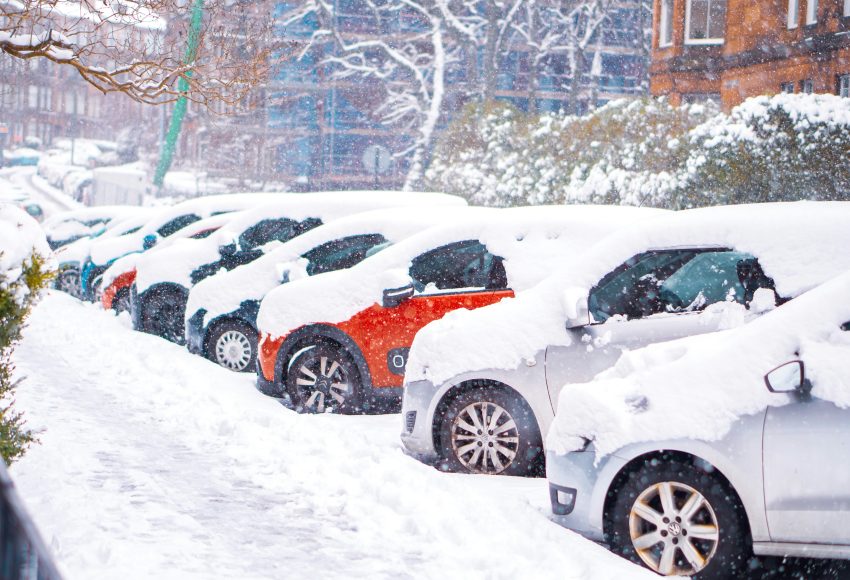Taking Care of Your Vehicle in the Winter
Winter brings with it a unique set of challenges for vehicle maintenance. From plummeting temperatures to icy roads, the colder months can take a toll on your vehicle, affecting its performance, safety, and longevity. In this blog, we will delve into essential winter care tips that ensure your vehicle remains in top condition, even in the harshest weather conditions. Whether it’s preparing your car for the cold, understanding the importance of antifreeze, or learning the best practices for battery maintenance, we’ve got you covered.
Why Is it Important to Prepare Your Car for Ontario Winters?
Winterizing your car before the cold weather arrives in Ontario is essential due to the region’s severe winter conditions, characterized by heavy snowfall, icy roads, and below-freezing temperatures. This process enhances safe driving by ensuring vital components like tires, brakes, and lights are in top condition, providing the necessary traction and visibility for slippery roads and longer nights. It also involves checking and adapting your vehicle’s fluids to prevent freezing, which is crucial for maintaining engine health in cold weather.
Additionally, when you winterize your car, it addresses the challenges posed by road salt, which can lead to corrosion and rust, by recommending protective measures and regular maintenance. It ensures that your car’s battery is capable of handling cold starts and prepares you for emergencies with a well-equipped winter kit. Overall, taking these steps not only boosts your safety and comfort but also extends your vehicle’s longevity through Ontario’s demanding winter months.
12 Ways to Prepare Your Car for Winter Weather in Ontario
Preparing your car for the winter season is vital to ensure your safety and the vehicle’s longevity, especially in regions like Ontario, where the cold weather brings snow, ice, and freezing temperatures. Here are 12 easy ways to get your car winter-ready, expanded with more details and tips:
Check Your Battery
The performance of your car’s battery can significantly decline in cold weather as the chemical reactions required to generate power slow down. A weak car battery may not start your car on a cold morning. It’s advisable to have a professional mechanic test your battery’s charge level and its ability to hold this charge. If your battery is more than three years old, it’s wise to consider its replacement preemptively.
Additionally, cleaning the battery terminals to remove corrosion can improve the electrical connection and prevent starting issues. This is also a good time to inspect the battery for any signs of damage or leaks, ensuring it’s securely mounted to avoid any unnecessary vibration.
Install Winter Tires
Switching to winter or snow tires is crucial for enhancing traction, braking, and handling on snow and ice-covered roads. Unlike all-season tires, winter tires are designed with a softer rubber compound that remains flexible at low temperatures for better grip. It’s important to install a full set of dedicated winter tires to maintain balanced handling of your vehicle.
Regularly check for low tire pressure, as it decreases in colder weather, which can affect fuel efficiency and the tire’s lifespan. Also, consider the tire tread depth; a good rule of thumb is that winter tires should be replaced if the tread wears down to 4/32 inches of depth.
Fluid Levels and Types
Ensuring your vehicle’s fluids are prepared for winter involves more than just topping them up. To prevent the cooling system from freezing, the antifreeze or coolant should be checked for the correct mixture ratio (usually 50/50 antifreeze to water). Using a winter-grade windshield washer fluid that won’t freeze at low temperatures is crucial for maintaining visibility. Additionally, it’s a good time to check the oil and consider switching to a winter-grade oil if your vehicle manufacturer recommends it, as some oils can thicken in cold temperatures, making it harder for your engine to turn over.
Check Your Lights
With the winter season bringing shorter days and potentially hazardous winter driving conditions, ensuring your vehicle’s lighting system is fully operational is paramount. This includes headlights, taillights, brake lights, and turn signals. Clean and clear lights improve your visibility to other drivers and help you see more of the road ahead. Additionally, checking the alignment of your headlights can ensure you’re not inadvertently blinding oncoming traffic while also maximizing the road illumination for your safety.
Replace Wiper Blades
Winter wiper blades are designed to resist snow and ice buildup and maintain a clear view of the road. These blades often come with a rubber cover that prevents ice from accumulating in the metal frame. Replacing worn windshield wipers can prevent streaks and smears on your windshield that impair your visibility. It’s also beneficial to apply a water-repellent treatment to the exterior of the windshield to help keep it clear in rainy or snowy conditions.
Inspect Brakes
The braking system is your car’s most important safety feature, especially in winter when stopping distances can increase significantly on icy or wet roads. A thorough inspection of your brakes by a professional can identify any components that need replacement or repair, such as worn brake pads or discs, and ensure the brake fluid is at the correct level and condition. Good brakes can mean the difference between a safe stop and an accident in cold weather conditions.
Examine Belts and Hoses
Cold temperatures can harden and crack rubber components, leading to leaks and failures. Inspect belts for cracks and fraying and ensure they’re tight and aligned. Hoses should be checked for leaks, bulges, or signs of wear. Replacing these components before they fail can prevent breakdowns and expensive repairs, as well as ensure your vehicle’s reliability in the cold.
Maintain a Full Gas Tank
Keeping your fuel tank at least half full during the winter months serves multiple purposes. It reduces the chance of moisture forming in the tank and potentially freezing in the fuel lines. A fuller tank also adds weight to your vehicle, which can improve traction in some conditions. Additionally, in the event of an emergency, having a significant amount of fuel can keep the heater running to help you stay warm while waiting for assistance.
Inspect and Maintain the Heating System
It’s not just about staying warm; your car’s defroster relies on the heater to clear the windshield and windows for good visibility. Before the cold weather sets in, test your vehicle’s heating and ventilation system to ensure it can produce and sustain heat efficiently. Check for any odd smells or noises when the heater is running, as these could indicate underlying problems. If the heat output is insufficient or if the system is malfunctioning, have it inspected and repaired by a professional. This will ensure you and your passengers remain warm and your windshield stays clear of frost and fog.
Check the Exhaust System
A leaky exhaust system can be dangerous, especially in winter, when windows are closed, and the vehicle’s interior is sealed tight. Exhaust fumes can enter the cabin and pose serious health risks. Inspect the exhaust system for rust, holes, and loose connections. Pay attention to any unusual noises that might indicate leaks. Ensuring your exhaust system is intact and leak-free keeps you safe from harmful emissions.
Protect Your Car’s Exterior
The combination of moisture, salt, and cold can accelerate rusting and corrosion on your vehicle’s body and undercarriage. Applying a high-quality wax can protect the paint surface. Regular car washes, including undercarriage blasts, can help remove salt and prevent rust. Consider applying a rust inhibitor to the undercarriage for additional protection, especially if your area uses road salt extensively.
Carry an Emergency Kit
A well-prepared emergency kit can be a lifesaver if you’re stranded. Your winter kit should include items like warm clothing, blankets, non-perishable snacks, water, a flashlight with extra batteries, snow and ice scraper, a small shovel, sand or cat litter for traction, jumper cables, and a first aid kit. It’s also wise to include a portable charger for your mobile phone.
FAQs
What temperature should my engine be in winter?
Your engine should reach a normal operating temperature of about 195°F to 220°F (90.6°C to 104.4°C), even in winter. Modern vehicles are designed to maintain a consistent engine temperature regardless of the weather.
What is the best solution for driving in snow?
The best solution for driving in snow is to use winter tires for improved traction, drive slowly to maintain control, and increase your following distance to account for longer stopping distances. Always use gentle inputs for steering, braking, and accelerating.
How do I protect my car’s windshield from ice?
To protect your windshield from ice, use a windshield cover overnight. Applying a water-repellent treatment can also help. For prevention, park your car in a garage or under cover if possible.
How do you take care of your engine in the winter?
Take care of your engine in winter by ensuring it has the correct type of oil for cold temperatures, keeping the coolant at the right antifreeze level, and allowing your car to warm up for a few minutes before driving.
How do I keep snow from sticking to my car?
To keep snow from sticking to your car, apply quality wax to the exterior surfaces before winter arrives. This creates a protective layer that makes it harder for snow to adhere and easier to remove.





